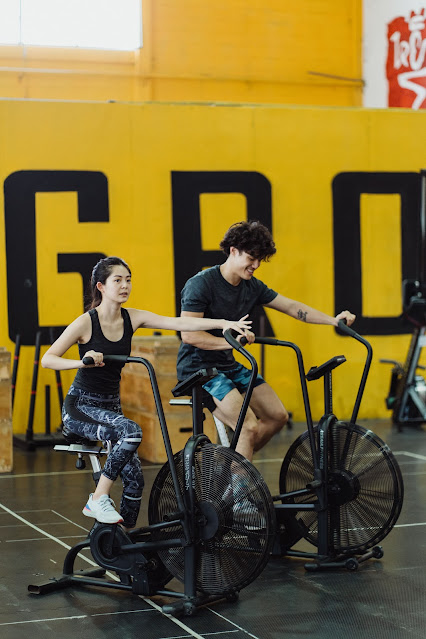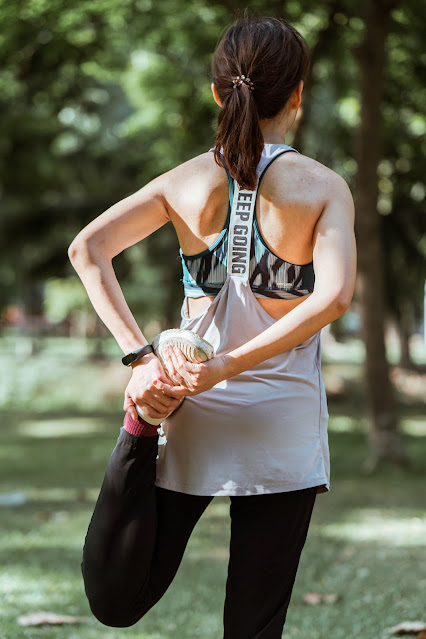Introduction
A. Importance of regular exercise
1. Physical health benefits
- Improved cardiovascular health
- Stronger muscles and bones
- Weight management
2. Mental health benefits
- Reduced stress and anxiety
- Improved mood and self-esteem
- Better sleep
B. Benefits of working out at a gym
1. Access to equipment and facilities
2. Variety of workout options
3. Expert guidance and support
4. Sense of community and accountability
C. Purpose of the guide
1. To provide a comprehensive overview of gym workouts for
beginners
2. To offer tips and advice on how to get started and make
the most of your gym experience
3. To promote safe and effective exercise practices
Getting Started
A. Choosing the right gym
1. Location
- Proximity to your home or work
- Accessibility and parking
- Operating hours
2. Amenities (Facilities)
- Types of equipment available
- Group fitness classes offered
- Availability of personal trainers or other support staff
- Amenities such as showers and locker rooms
3. Cost
- Membership fees and options
- Additional costs such as personal training sessions or class fees
- Discounts and promotions available
B. Setting realistic goals
1. Weight loss
- Establishing a healthy calorie deficit
- Setting a target weight or body fat percentage
2. Muscle gain
- Setting target muscle mass or strength goals
- Understanding the importance of proper nutrition and recovery
3. Cardiovascular fitness
- Setting target heart rate or VO2 max goals
- Understanding the importance of regular cardio training
C. Understanding gym equipment and facilities
1. Weight machines
- Understanding how to properly use and adjust weight machines
- Familiarizing yourself with common machines such as leg press, lat pull-down, and seated row
2. Free weights
- Understanding proper form and technique for exercises such as dumbbell press, barbell squats, and deadlifts
- Familiarizing yourself with different types of free weights such as dumbbells, kettlebells, and medicine balls
3. Cardio machines
- Understanding how to properly use and adjust cardio machines such as treadmills, ellipticals, and stationary bikes
- Familiarizing yourself with other cardio options such as rowing machines and stair climbers
D. Creating a workout plan
1. Frequency
- Understanding how often to work out based on your goals and fitness level
- Balancing rest and recovery with regular exercise
2. Intensity
- Understanding how hard to push yourself during each workout
- Gradually increasing intensity over time
3. Variety
- Understanding the importance of variety in your workout routine
- Incorporating different types of exercises and equipment
to prevent boredom and plateaus
- Mixing cardio and strength training for optimal results.
Basic Exercises for Beginners
A. Cardio exercises
1. Treadmill
How to properly use and adjust the treadmill
- Adjusting the speed and incline
- Setting up your workout program
- Proper posture and alignment while running on the treadmill
- Incorporating interval training
- Gradually increasing speed and incline over time
- Using proper form and technique
- Staying hydrated and properly warming up and cooling down
- Listening to your body and avoiding overexertion
- Using the handrails only for balance, not support
- Wearing appropriate shoes
2. Elliptical
How to
properly use and adjust the elliptical
- Adjusting resistance level
- Setting up your workout program
- Proper posture and alignment while using the elliptical
Tips for
maximizing the cardio benefits of the elliptical
- Incorporating interval training
- Gradually increasing resistance level over time
- Using proper form and technique
- Staying hydrated and properly warming up and cooling down
- Listening to your body and avoiding overexertion
- Using the moving handlebars for a full body workout
- Varying the incline level to target different muscle groups
3. Stationary Bike
How to
properly use and adjust the stationary bike
- Adjusting resistance level
- Setting up your workout program
- Proper posture and alignment while using the stationary bike
Tips for
incorporating interval training on the stationary bike
- Alternating between high-intensity and low-intensity intervals
- Gradually increasing resistance level over time
- Using proper form and technique
- Staying hydrated and properly warming up and cooling down
- Listening to your body and avoiding overexertion
- Varying your workout by standing on pedals for a more intense workout
- Incorporating hill climbs to target different muscle groups
B. Strength training exercises
1. Squats
Proper form and technique for performing squats- Starting position and alignment of feet
- Keeping your back straight and core engaged
- Lowering your body by bending at the hips and knees
- Rising back up to starting position
- Goblet squats: Holding a weight (dumbbell or kettlebell) at chest level
- Front squats: Holding a weight (barbell or kettlebell) at front of shoulders
- Box squats: Performing squats while sitting on a box or bench
2. Deadlifts
Proper
form and technique for performing deadlifts
- Starting position and alignment of feet
- Keeping your back straight and core engaged
- Lowering your body by bending at the hips
- Grasping the weight (barbell or dumbbell)
- Rising back up to starting position
Variations
of deadlifts such as Romanian deadlifts, Sumo deadlifts, and Trap bar deadlifts
- Romanian Deadlifts: Keeping the knees slightly bent
- Sumo Deadlifts: Wider stance and pointing toes outwards
- Trap bar deadlifts: Using a trap bar instead of a straight barbell
3. Bench press
Proper
form and technique for performing bench press
- Lying flat on a bench
- Grasping the barbell at shoulder width
- Lowering the barbell to the chest
- Pushing the barbell back up to starting position
Variations
of bench press such as Incline press and Decline press
- Incline press: Adjusting the bench to an incline position, targets upper chest and shoulders
- Decline press: Adjusting the bench to a decline position, targets lower chest and abs
C. Stretching and flexibility
Importance of stretching
1. How stretching can improve your workout
- Improves flexibility and range of motion
- Increases blood flow and oxygen to muscles
- Enhances muscle recovery and growth
- Enhances the body's balance and coordination
2. How stretching can prevent injury
- Loosens tight muscles and tendons
- Improves posture and alignment
- Helps to reduce muscle soreness after workout
- Decreases the risk of muscle strains, tears and other types of injuries
Basic stretches
Examples of basic stretches such as hamstring stretch, quad
stretch, and shoulder stretch
1. Hamstring stretch: Sitting on the floor with one leg extended and the other bent, gently lean forward to stretch the hamstring of the extended leg
2. Quad stretch: Standing upright and holding onto a wall or chair for balance, bend one knee to bring the heel towards the buttocks to stretch the quadriceps
3. Shoulder stretch: Standing or sitting, cross one arm across the chest and hold the elbow with the opposite hand to stretch the shoulders.
Tips for stretching properly
- Hold stretches for at least 15-30 seconds
- Never force or bounce during a stretch
- Breathe deeply while stretching
- Avoid stretching cold muscles
Importance of stretching after workout
- Helps to reduce muscle soreness
- Improves muscle recovery
- Enhances flexibility and range of motion
- Improves overall athletic performance
Safety and Proper Form
A. Injury prevention
- Warming up and cooling down properly
- Using proper form and technique
- Gradually increasing intensity and weight
- Staying hydrated and getting enough rest
- Listening to your body and avoiding overexertion
B. Importance of proper form
- Ensures maximum effectiveness of exercises
- Reduces the risk of injury
- Improves balance, stability, and overall athletic performance
C. Common mistakes to avoid
- Using too much weight before building the proper foundation
- Neglecting proper form and technique
- Not warming up or cooling down properly
- Neglecting stretching and flexibility
- Neglecting proper rest and recovery
Conclusion
In conclusion, the importance of regular exercise and the
benefits of working out at a gym have been discussed in this guide. We have
provided tips for getting started and making the most of your gym experience,
including choosing the right gym, setting realistic goals, and understanding
gym equipment and facilities. Additionally, we've covered basic exercises for
beginners, such as cardio exercises, strength training exercises and stretching
and flexibility. Remember that safety and proper form are crucial to achieving
your fitness goals and preventing injury, and it's always a good idea to
consult a trainer or professional for guidance. As a reminder, consistency is
key in achieving fitness goals and staying motivated, so make sure to stay
consistent and seek professional help when needed.












0 Comments